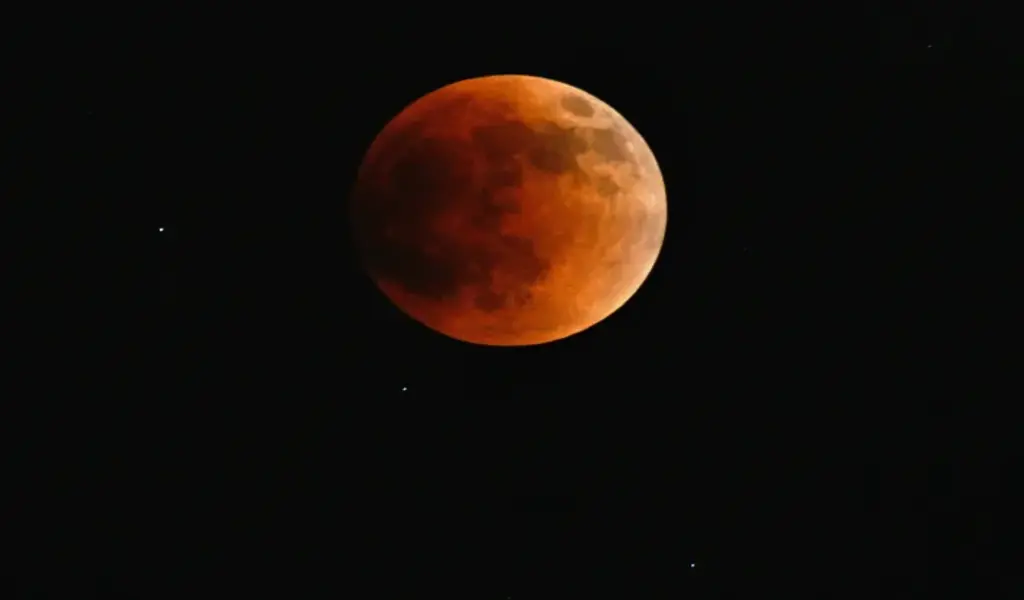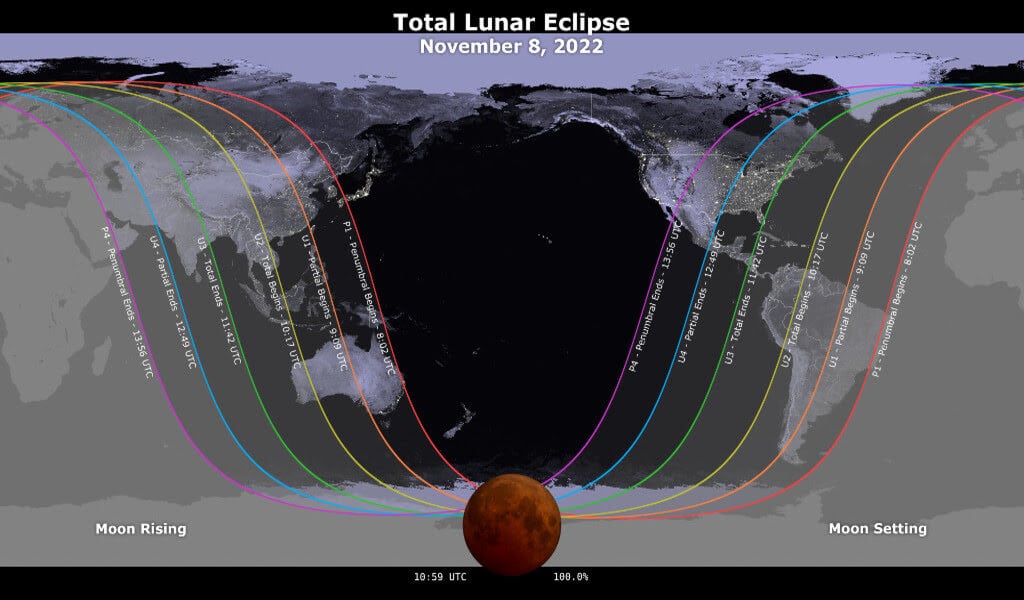News
The Last Total Lunar Eclipse Is Coming on 8th November Until 2025. Here’s why we’re Fascinated by it

(CTN NEWS) – There’s a high chance you don’t have anything planned for 4:09 a.m. E.T. on Tuesday, Nov. 8. If your calendar is clear, it’ll be the last total lunar eclipse until 2025.
In a lunar eclipse, the Earth passes directly between the sun and the moon, casting a deep shadow across its surface.
Due to the lunar passage around the planet, lunar eclipses occur once every 27 days when the moon and the sun are on opposite sides of the Earth.
In contrast, the moon’s orbit is inclined 5 degrees relative to the Earth’s equator, so the Earth’s shadow most often passes above or below the moon.
An eclipse only occurs about once every year and a half when the three bodies line up perfectly. However, that frequency is just an average.
The total eclipse scheduled for tomorrow will be the second of 2022, following the total eclipse on May 15. There will be a three-year wait for the next eclipse after this one.
Here are the best places to watch the Lunar Eclipse
NASA reports that the eclipse will be visible throughout North America, Central America, Asia, Australia, and the Pacific islands.
Colombia, western Venezuela, and Peru will also be able to watch the spectacle. Africa, most of Europe, and the Middle East will be excluded.
As the eclipse unfolds, the 4:09 a.m. mark marks the first time the Earth’s shadow bites into the moon. The darkness will gradually advance until, at 5:16 a.m. Eastern Time, totality is reached, lasting until 6:42 a.m.
After this, the moon will gradually emerge from the shadow of the Earth. In contrast to solar eclipses, the moon will only partially disappear from the sky. Instead, a blood moon will glow a ghostly red.
This is caused by light from the sun scattering down—and filtering out—blue wavelengths as it passes through Earth’s atmosphere.
As a result, red light bathes the moon throughout the eclipse as it passes straight through our planet’s air.
As haze increases in the atmosphere due to dust storms, wildfires, and volcanic eruptions, the light that streams through becomes redder.
An Enduring Fascination
Moon eclipses have long captivated humanity. Astronomers can forecast future eclipses and retrace past eclipses using Earth, sun, and moon positions.
NASA has assigned a date to the earliest lunar eclipse recorded in Babylonian records, which occurred on Feb. 6, 746 BCE. Both superstitions and fear always accompany the occurrence of an eclipse.
In Joel 2:31, the Bible states, “The Sun will turn to darkness, and the Moon to blood before the great and dreadful day of the Lord comes.”
According to the Toba people of South America, the eclipse was caused by the spirits of dead people carrying jaguars and attacking the moon.
Native American Hupas believed that the moon had 20 wives and many mountain lions and snakes and would attack it if it failed to feed the animals sufficiently.
When the wives intervened to offer protection, the eclipse ended.
The 21st-century lunar eclipse may have fewer superstitions, but it still inspires both fascination at its sheer beauty and at least a little residual unease at its break from the normal, formal pattern of things.
“Astronomical changes determine life’s rhythm,” says Alphonse Sterling, an astrophysicist at NASA Marshall Space Flight Center in Huntsville, Ala.
“We aren’t aware of the oscillations in cesium atoms, but we are aware of the sky.” The Earth spins on its axis in 23 hours, 15 minutes, and four seconds. The moon’s appearance is also part of that predictability.
All of that stuff is associated with harvest moons. “When regularity isn’t there, it throws us off.”
There will be a return to regularity tomorrow at 7:49 a.m. Eastern Time when the last of the eclipse passes and the full moon returns.
Eastern U.S. skygazers will see the moon set by then, but elsewhere, more westerly parts will see the moon unshadowed and lions, snakes, and jaguars soothed.
RELATED CTN NEWS:
Subtropical Storm; Florida’s East Coast Is Under Hurricane Watch Ahead Of Subtropical Storm Nicole
Japan Warns Biden’s $7500 EV Tax Credit Will Cost Auto Workers Jobs
Climate Activists Storm Schiphol Airport in the Netherlands































